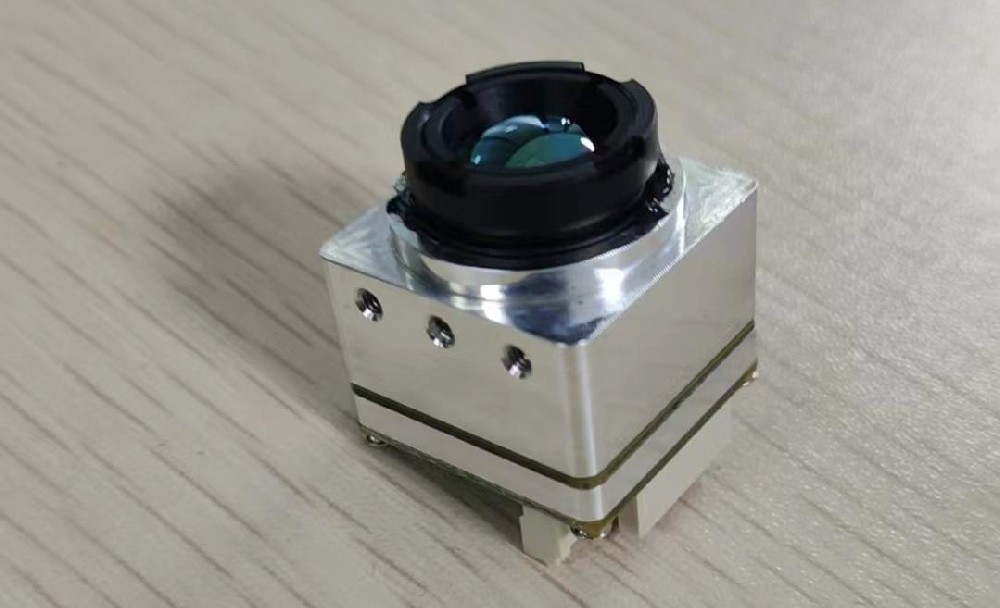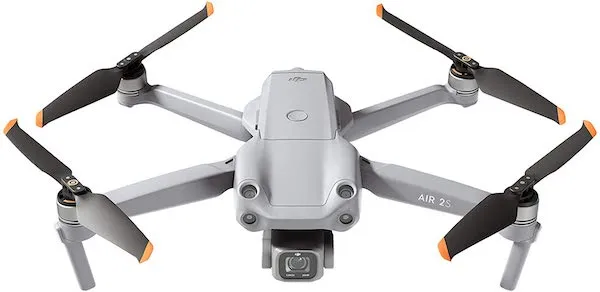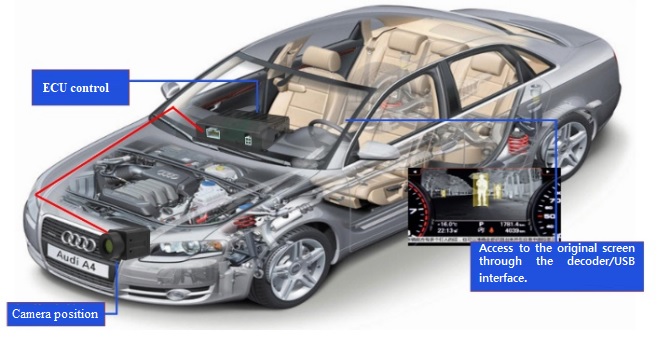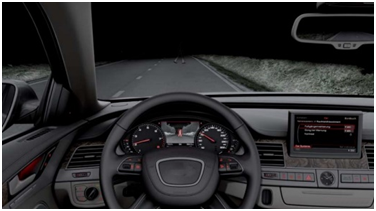Exploring Thermal Imaging Cameras
As technology continues to advance, so do the features and capabilities of thermal imaging cameras. From non-cooling infrared focus plane detectors to high-resolution imaging, these devices are revolutionizing safety and efficiency across industries. Moreover, the growing demand for thermal imaging technology underscores its importance in enhancing operational effectiveness and preventing accidents.
Infrared Imaging: "Thermal imaging cameras provide a unique perspective by capturing infrared radiation emitted by objects, allowing for enhanced visibility in various applications."
This section MUST use at least one "List" or one "Blockquotes" to increase the readability and rich the blog for the audience.
Advanced Features and Applications
Vanadium Oxide Non-Cooling Infrared Focus Plane Detector
Thermal imaging cameras are equipped with the advanced Vanadium Oxide non-cooling infrared focus plane detector, which plays a pivotal role in capturing high-quality thermal images. This cutting-edge technology enables the camera to detect and visualize infrared radiation emitted by objects without the need for cooling mechanisms. By eliminating the requirement for cooling, these detectors enhance the portability and efficiency of thermal imaging cameras, making them more versatile across various field equipment applications.
The benefits of the Vanadium Oxide non-cooling infrared focus plane detector are substantial. It allows for rapid image capture, making it ideal for dynamic environments where quick and accurate thermal imaging is crucial. Additionally, this advanced feature contributes to the durability and reliability of thermal imaging cameras, ensuring consistent performance even in demanding conditions.
256×192 Resolution
The 256×192 resolution in thermal imaging cameras signifies a significant advancement in image clarity and detail. This high resolution enables users to capture precise thermal data with exceptional accuracy, enhancing the effectiveness of these devices in diverse field equipment applications. The detailed imagery provided by the 256×192 resolution facilitates comprehensive analysis and identification of temperature variations, allowing for precise diagnostics and decision-making.
In various field equipment scenarios, such as electrical maintenance or building inspections, the 256×192 resolution empowers professionals to detect subtle temperature differences that could indicate potential issues or anomalies. Furthermore, this level of detail supports efficient troubleshooting and preventive maintenance activities, ultimately contributing to improved safety and operational efficiency.
Benefits of Thermal Imaging Cameras
Enhanced Safety and Efficiency
Thermal imaging cameras play a crucial role in enhancing safety and efficiency across various field equipment applications. By detecting and visualizing infrared radiation emitted by objects, these advanced devices enable professionals to identify potential hazards and anomalies that may not be visible to the naked eye. This capability is particularly valuable in industrial settings, where early detection of overheating equipment or electrical issues can prevent accidents and equipment failures.
Moreover, thermal imaging cameras contribute to operational efficiency by facilitating proactive maintenance. By identifying areas of concern through thermal imaging, professionals can address potential problems before they escalate, minimizing downtime and optimizing the performance of critical equipment. The ability to conduct thorough inspections without physical contact also enhances operational efficiency, as it reduces the need for extensive manual monitoring and maintenance procedures.
Effective Surveillance and Maintenance
In addition to enhancing safety, thermal imaging cameras offer significant benefits in surveillance and maintenance activities. These devices enable effective monitoring of equipment, structures, and facilities by providing real-time thermal data. In surveillance applications, thermal imaging technology allows for continuous monitoring of temperature variations, enabling early detection of overheating components or potential fire hazards.
When it comes to maintenance activities, thermal imaging cameras support predictive maintenance strategies by identifying areas of concern before they lead to costly breakdowns. By capturing detailed thermal images, these devices provide valuable insights into the condition of mechanical, electrical, and structural components. This proactive approach to maintenance helps organizations optimize their resources while ensuring the reliability and longevity of critical assets.
Practical Applications in Field Equipment
Inspecting Power Lines
When it comes to inspecting power lines, thermal imaging cameras offer a practical and efficient solution. These advanced devices enable professionals to detect potential issues in power lines by capturing infrared radiation emitted by the components. The application of thermal imaging technology in power line inspections provides several advantages, including:
Early Detection: Thermal imaging cameras allow for the early detection of hotspots along power lines, which could indicate areas of excessive resistance or potential equipment failure. This proactive approach enables maintenance teams to address issues before they escalate, minimizing the risk of outages and ensuring uninterrupted power supply.
Enhanced Safety: By identifying overheating components or faulty connections, thermal imaging cameras contribute to the safety of personnel working on or near power lines. The ability to pinpoint anomalies without direct contact with the equipment reduces the risk of accidents and electrical hazards during inspection procedures.
Improved Efficiency: The use of thermal imaging cameras streamlines the process of inspecting extensive power line networks. Professionals can quickly capture thermal data from various locations, allowing for comprehensive assessments without the need for physical contact with the infrastructure. This efficiency translates to cost savings and optimized resource allocation in maintenance operations.
Thermal Camera Applications: "Thermal imaging cameras play a vital role in enhancing the safety and efficiency of power line inspections by enabling early detection of potential issues."
Monitoring Wildlife and Search and Rescue Missions
In the realm of wildlife monitoring and search and rescue missions, thermal imaging cameras offer invaluable support through their advanced capabilities. These devices play a crucial role in these specific field equipment applications by providing:
Enhanced Visibility: Thermal imaging technology allows for clear visibility in low-light conditions, making it highly effective for monitoring wildlife activities during nighttime or in dense vegetation. The ability to detect heat signatures enables researchers and conservationists to track animal movements with precision.
Search Efficiency: In search and rescue missions, thermal imaging cameras aid in locating individuals or animals in various environments, including dense forests or challenging terrains. The ability to detect body heat signatures facilitates quicker identification and retrieval efforts, improving overall mission effectiveness.
Safety Enhancement: Thermal imaging technology enhances safety by enabling search teams to identify potential hazards or obstacles that may not be visible through traditional methods. This capability minimizes risks associated with rescue operations and contributes to successful outcomes.
The versatile nature of thermal imaging cameras makes them indispensable tools for wildlife monitoring initiatives as well as search and rescue missions across diverse landscapes.
The Growing Demand for Thermal Imaging Technology
As technology continues to evolve, the demand for thermal imaging technology is experiencing a significant upsurge across various industries. This growing adoption of thermal imaging cameras in field equipment can be attributed to several key factors that underscore the importance and future potential of this advanced technology.
Increasing Industry Adoption
Industries ranging from manufacturing and construction to aerospace and defense are increasingly integrating thermal imaging technology into their operations. The versatility and practical applications of thermal imaging cameras have positioned them as essential tools for enhancing safety, conducting efficient inspections, and optimizing maintenance activities. The ability of these devices to detect temperature variations and identify potential issues before they escalate aligns with the proactive approach adopted by modern industries.
Moreover, the adoption of thermal imaging technology is driven by the continuous advancements in camera features, such as higher resolutions, enhanced image processing capabilities, and improved portability. These developments have expanded the scope of thermal imaging applications, making them indispensable across diverse industrial sectors.
Industry Impact: "The widespread adoption of thermal imaging technology is reshaping safety protocols, maintenance practices, and operational efficiency across industries."
Technological Advancements and Future Trends
The landscape of thermal imaging technology is marked by ongoing advancements that are shaping its future trajectory. From the integration of artificial intelligence for real-time analytics to the development of compact and ruggedized thermal cameras, technological innovations are driving the evolution of thermal imaging capabilities.
Future trends in thermal imaging technology point towards increased connectivity and interoperability with other smart devices and systems. This convergence holds promise for seamless data integration, augmented reality applications, and enhanced predictive maintenance strategies. Additionally, advancements in materials science are contributing to the development of more sensitive infrared sensors, further improving the accuracy and reliability of thermal imaging cameras.
As industries continue to prioritize safety, efficiency, and sustainability, it's evident that the demand for thermal imaging technology will persist while paving the way for innovative applications in field equipment.
The Versatility of Thermal Imaging Cameras in Field Equipment
Thermal imaging cameras offer unparalleled versatility and numerous benefits across a wide array of field equipment applications. Their advanced capabilities in capturing infrared radiation and translating it into detailed images make them invaluable tools in various industries. The growing importance of thermal imaging technology is evident in its significant role in enhancing safety, efficiency, and operational effectiveness.
Thermal Imaging Advantages: "The versatility of thermal imaging cameras extends to diverse field equipment applications, providing enhanced safety, efficient maintenance, and proactive issue identification."
From inspecting power lines to monitoring wildlife and conducting search and rescue missions, the practical applications of thermal imaging cameras are extensive.
The increasing demand for thermal imaging technology underscores its future potential as an essential component of modern field equipment across industries.
 ch
ch English
English





